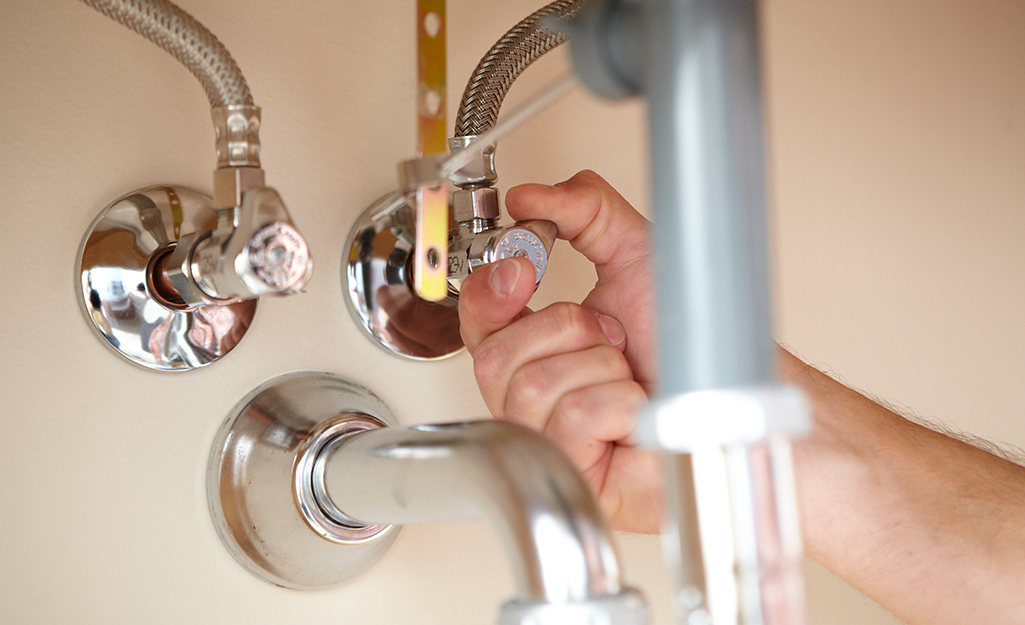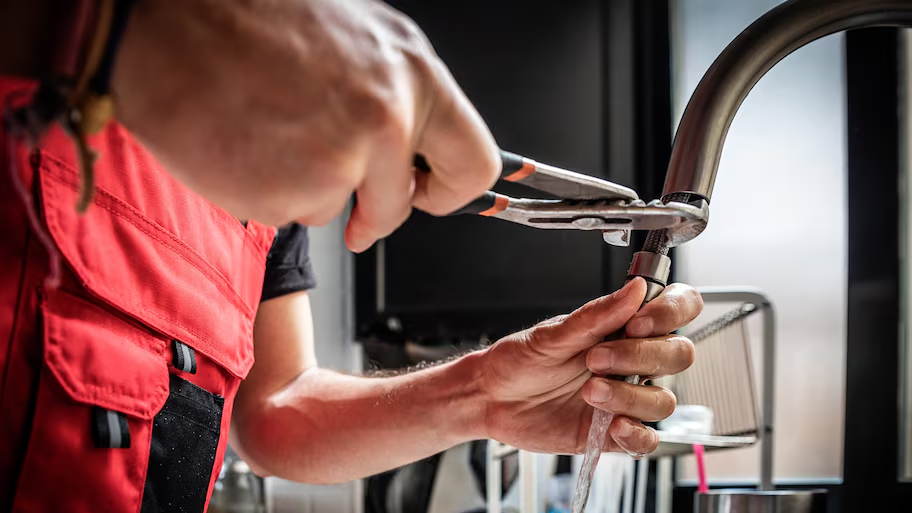Our Explanations Behind Dealing with a Malfunctioning Faucet
Our Explanations Behind Dealing with a Malfunctioning Faucet
Blog Article
Have you been trying to find tips about Water Dripping from Faucet: Why and How to Fix?

Leaking taps might appear like a small hassle, but their influence goes beyond simply the aggravation of the audio. From drainage to sustaining unnecessary financial prices and health and wellness risks, neglecting a dripping faucet can result in various effects. In this write-up, we'll delve into why it's essential to address this common household problem without delay and efficiently.
Waste of Water
Ecological Influence
Leaking faucets contribute substantially to water wastefulness. According to the Environmental Protection Agency (EPA), a solitary tap dripping at one drip per second can lose greater than 3,000 gallons of water per year. This not just stress water resources yet also affects communities and wild animals dependent on them.
Financial Expenses
Increased Water Expenses
Beyond the environmental effect, trickling taps can blow up water costs considerably. The built up wastefulness gradually equates right into higher energy expenses, which can have been stayed clear of with prompt repair work.
Potential Residential Property Damages
Additionally, long term dripping can bring about damage to fixtures and surface areas surrounding the tap. Water build-up can create staining, rust, and also architectural concerns if left neglected, causing added fixing costs.
Health Worries
Mold And Mildew and Mold Growth
The consistent existence of dampness from a leaking faucet creates an excellent setting for mold and mildew and mold growth. These fungi not just endanger indoor air top quality yet likewise present wellness dangers, specifically for individuals with respiratory system problems or allergic reactions.
Waterborne Diseases
Stagnant water in leaking taps can come to be a breeding ground for bacteria and various other microorganisms, boosting the risk of waterborne illness. Impurities such as Legionella bacteria flourish in stationary water, potentially resulting in serious illnesses when consumed or breathed in.
DIY vs. Professional Repair
Benefits and drawbacks of DIY Repair
While some might try to repair a dripping tap themselves, DIY repairs feature their own collection of challenges. Without appropriate understanding and devices, DIY efforts can aggravate the concern or lead to insufficient repair work, extending the problem.
Advantages of Hiring a Professional Plumber
Hiring a specialist plumber ensures that the underlying cause of the dripping faucet is resolved efficiently. Plumbers have the experience and tools to identify and repair tap concerns successfully, saving time and decreasing the threat of more damage.
Step-by-Step Overview to Taking Care Of a Dripping Faucet
Devices Needed
Prior to trying to fix a trickling tap, gather the essential devices, including an adjustable wrench, screwdrivers, substitute components (such as washers or cartridges), and plumber's tape.
Usual Tap Issues and Their Solutions
Recognize the kind of faucet and the specific problem triggering the drip. Typical issues consist of damaged washing machines, rusty shutoff seats, or faulty O-rings. Describe producer directions or on the internet tutorials for detailed guidance on repair services.
Preventive Measures
Regular Maintenance Tips
To prevent leaking faucets, carry out routine upkeep such as cleansing aerators, examining for leaks, and changing worn-out components promptly. Additionally, take into consideration mounting water-saving devices or upgrading to much more reliable components.
Relevance of Prompt Repair Works
Dealing with leaking taps as soon as they're observed stops additional water waste and prospective damages, ultimately conserving both water and cash in the future.
Impact on Residential Or Commercial Property Value
Assumption of Well-Maintained Property
Preserving a property in good condition, consisting of resolving upkeep concerns like dripping faucets, improves its viewed worth and worth among possible buyers or occupants.
Impact on Resale Value
Characteristics with well-kept plumbing components, consisting of taps, command higher resale values in the realty market. Addressing dripping faucets can add to a favorable perception throughout residential property assessments and arrangements.
Environmental Obligation
Individual Payment to Preservation
Taking obligation for repairing trickling taps lines up with broader efforts towards water conservation and environmental sustainability. Every individual's activities collectively make a substantial impact on protecting precious resources.
Sustainable Living Practices
By prioritizing timely repairs and taking on water-saving routines, individuals add to sustainable living methods that benefit both present and future generations.
Verdict
Addressing a leaking tap exceeds mere comfort; it's a vital action towards saving water, decreasing financial costs, and guarding wellness and home. Whether via DIY repair work or expert aid, acting to fix trickling taps is a little yet impactful way to advertise accountable stewardship of resources and add to a healthier, extra sustainable future.
How to Fix a Leaky Faucet: Step-by-Step Repair Guide
A leaky faucet may seem like a simple annoyance, but if it's not fixed promptly, that leak could cost hundreds to potentially thousands. From water damage to mold, mildew, and high water bills, even a tiny leak can be catastrophic if left unattended. Damage like this can even affect the overall value of your home, so it's important to take the right approach for leaky faucet repair. You may need the help of a plumber in some cases, but we've got a few tips you can try on how to fix a leaky faucet before calling the pros.
Four Faucet Types
When you're learning how to fix a leaky faucet, the first step is knowing what kind of faucet you're working with! There are four common types.
Cartridge Faucets
Cartridge faucets come in one- or two-handled varieties. In one-handled cartridge faucets, hot and cold water combines in a single cartridge. In the two-handled versions, hot and cold water are controlled separately and mixed in the faucet.
Ball Faucets
Ball faucets have a single lever you push up and down to adjust the pressure and rotate to change the temperature. A slotted metal ball controls the amount of water allowed into the spout.
Compression Washer Faucets
They're the oldest type of faucet, but they're still used in many homes — especially older ones. Compression faucets have two separate handles that, when turned, raise or lower the washer that seals a water valve. This valve stops water from flowing through the faucet when it is turned off.
Disc Faucets
Disc faucets rarely need to be repaired due to their maintenance-free design. The water flow is controlled by two discs — the upper one raises and lowers against a fixed lower disc, creating a watertight seal. If your disc faucet starts leaking, you may need to replace the seals or clean residue buildup from the inlets.
Fixing a Leaky Faucet
Step 1: Turn Off the Water
Whether you're learning how to fix a leaky bathtub faucet or how to fix a leaky kitchen faucet, always turn off the water supply to your working area when you're fixing a leak. The last thing you want is a flood added to your list of things to fix.
Look for the shutoff valves below your sink or around the tub and turn them clockwise to stop the water flow. If your faucet doesn't have shutoff valves, you may need to turn off the water for the whole house. Check to make sure it's off by turning the faucet on. If nothing comes out, you're ready to start the repair.
Step 2: Take Apart the Faucet
How you disassemble your faucet depends on the type of fixture you have. You can use a flathead screwdriver to remove the caps on top of the handle or handles for cartridge and compression faucets. Inside, you should see handle screws. Unscrew these with a screwdriver to remove the handle.
Disc- and ball-style faucets will typically have an inlet screw near the handle, and removing that will reveal the interior of the faucet.
Detach the Valve Stem
For cartridge- and compression-style faucets, you'll see the inner valve stem or cartridge once you remove the faucet handles. If you have a compression faucet, unscrew the brass valve stem. If you have a cartridge faucet, pull out the cartridge. If your cartridge has been in place for a while, it may require some tools or extra force to remove it due to mineral deposits.
Examine and Replace Parts
Once you've removed the parts, check them out to confirm what needs to be replaced. You may see corroded rubber washers, O-rings, stems, or cartridges. On a ball-style faucet, check the seats and springs for damage.
If you need to repair a leaky disc faucet, check the inlet and seals on the lower disc.
Once you determine what parts must be replaced, visit your local hardware store. Bring the damaged parts with you to ensure you can purchase the correct components to replace them.
Clean Valves and Faucet Cavity
If you've removed a stem or cartridge, you may notice mineral buildup in the faucet's threads. Use white vinegar to clean the valve seat by soaking it for a few minutes, then scrub it away with a soft toothbrush and rinse with warm water. You can also clean the interior of the faucet in the same way.
Reassemble the Faucet
Once your faucet is cleaned and the required parts have been replaced, it's time to reassemble it. Put the pieces back together and slowly turn the water supply back on. Doing this slowly is crucial because too much initial water pressure can damage the new hardware you've just installed.
https://homewarranty.firstam.com/blog/how-to-fix-leaky-faucet

We hope you liked our section about Water Dripping from Faucet: Why and How to Fix. Thanks for spending some time to browse our piece. So long as you enjoyed our post if you please consider to pass it around. Thank-you for taking the time to read it.
Report this page